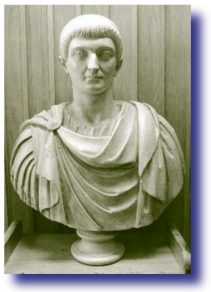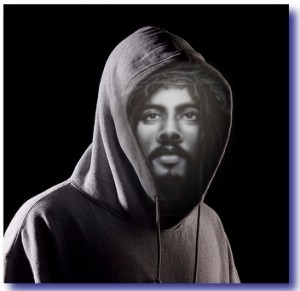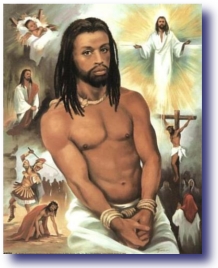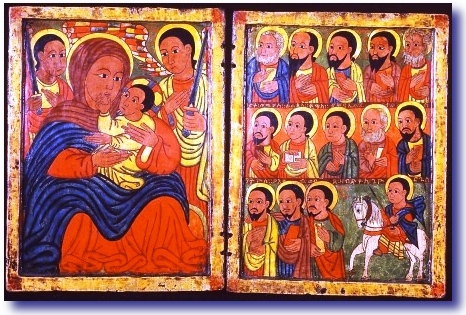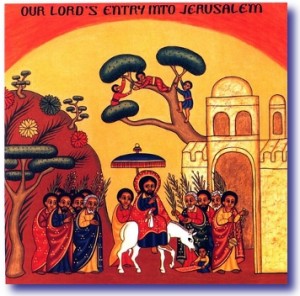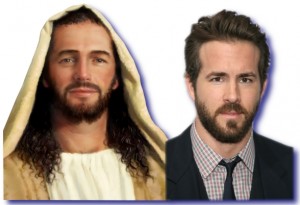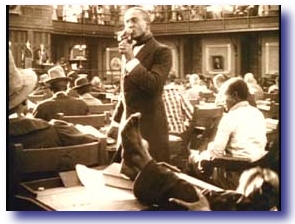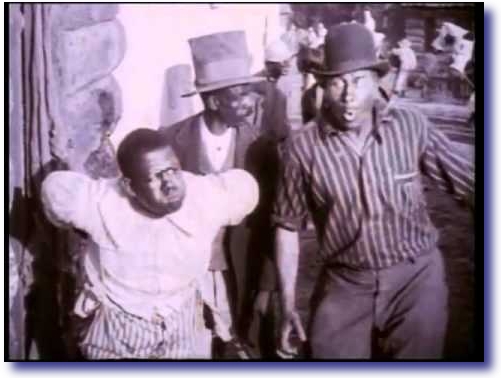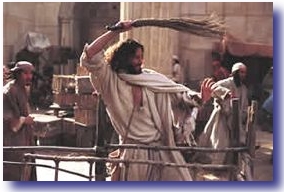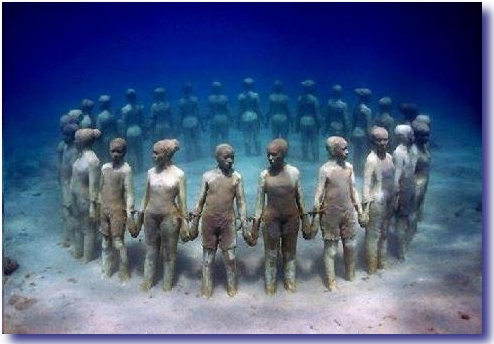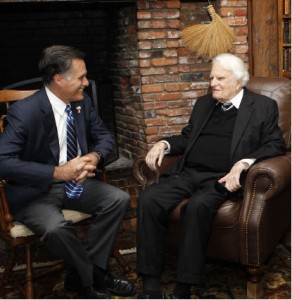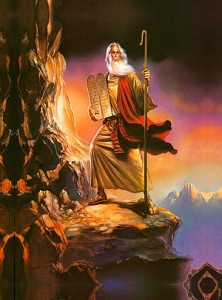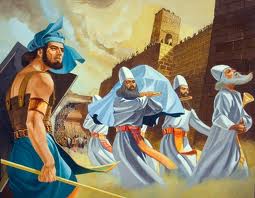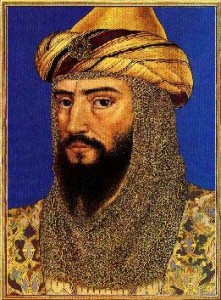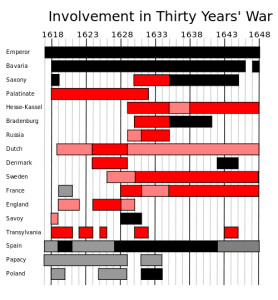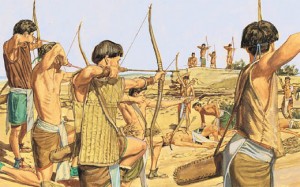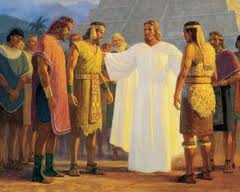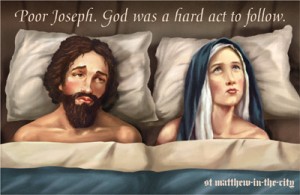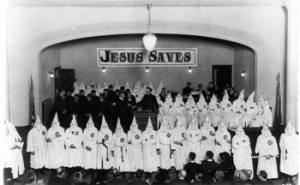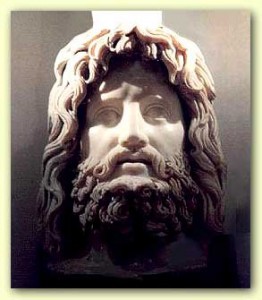 The story I’m about to tell you is absolutely true. It has always been known by an inner circle of powerful people and generally kept from the masses. The reality is, this truth has been hiding in plain site for well over 2,000 years. The truth can be a very dangerous thing. That is why it is most often guarded by a battalion of lies. Most of you have never heard this. Most of you will refuse to believe it. Some will do the research merely looking for a way to refute this truth. The thing about truth is, whether you believe it or not, once you’re exposed to it, it changes you. If you are unable to handle truth, stop reading now. If on the other hand you want to know, I have a story to tell you.
The story I’m about to tell you is absolutely true. It has always been known by an inner circle of powerful people and generally kept from the masses. The reality is, this truth has been hiding in plain site for well over 2,000 years. The truth can be a very dangerous thing. That is why it is most often guarded by a battalion of lies. Most of you have never heard this. Most of you will refuse to believe it. Some will do the research merely looking for a way to refute this truth. The thing about truth is, whether you believe it or not, once you’re exposed to it, it changes you. If you are unable to handle truth, stop reading now. If on the other hand you want to know, I have a story to tell you.
This story begins with a very famous Greek who conquered the then known world. His name was Alexander of Macedon. He is better known from history as Alexander the Great. While this story begins with him, it is not about him. The story is actually about one of his generals by the name of Ptolemy. Alexander practiced a form of conquest that was focused more on acquisition than destruction. What he did after he conquered a land, was install a governor, make those people a part of his empire and of course, tax them. The Romans learned from and followed Alexander’s example.
It should come as no surprise, after conquering Egypt, Alexander installed a governor and moved on. The governor that Alexander installed, was one of his favorite generals a man by the name of Ptolemy. It is important to note, that at that time – circa 300 BC – the only Europeans were either Greek or Roman. This is important to note because it means that the people who lived in Egypt, the Egyptians were Black Africans. All the great pyramids had already been built. All the great temples, the Sphinx all the wonders in Egypt had already been built before any Europeans stumbled into the Nile Valley. In point of fact, Egypt had already reached the pinnacle of it’s civilization and was in decline. This is important to note because many modern revisionist historians refuse to recognize the accomplishments of the Africans. The Jews have tried to take credit in their mythologies, but as usual get their stories wrong. A trip to Egypt and a simple inspection will prove that nothing from that period was built out of mud bricks made with straw. The Egyptians built in stone. And of course, now there is the “Alien Connection.” Some are saying that ancient visitors from outer space came down and did all the construction. It seems anything is more believable than Africans having built and left such a legacy. But I digress.
Ptolemy had a problem. In order to rule Egypt, he had to become Pharaoh of Egypt. The Pharaoh was considered to be a living god. Sure, you could try and rule by force alone. However, a culture as mature and developed as the Egyptians would be very difficult to rule by force of arms. If you think about it, our modern army the most modern and powerful fighting force yet to exist on this planet, has been unable to pacify the primitive nation of Afghanistan. You reach a point, where military might will not take you to the resolution you desire. What Ptolemy needed was to find someone to make him a god. Egypt was full of various religious denominations however the only group that would agree to his demands were the Coptic priests. In order to rule, Ptolemy had to become the supreme god, over and above all other Egyptian gods. The Coptics had just the ticket. They combined the essence of Osiris with Apis the bull and created a god called Serapis.
This new god was supreme and over all other gods. It possessed the form of a man and was depicted with an overflowing cup upon his head. Often around his head were depicted sprouting branches. Serapis gave life by pouring his essence or anointing from the cup that sat atop his head. This anointing was called the Christos. The priesthood who served Serapis became known as the Bishops of the Christos or Bishops of Christ.
“A correspondence of Emperor Hadrian refers to Alexandrian worshipers of Serapis calling themselves ‘Bishops of Christ’:
‘Egypt, which you commended to me, my dearest Servianus, I have found to be wholly fickle and inconsistent, and continually wafted about by every breath of fame. The worshipers of Serapis (here) are called Christians, and those who are devoted to the god Serapis (I find), call themselves Bishops of Christ.’
–Hadrian to Servianus, 134A.D. (Quoted by Giles, ii p86)”
Historical Context.
You are no doubt familiar with a rather famous Egyptian Queen by the name of Cleopatra. What most people do not know is that there were several Queens named Cleopatra. In point of fact, the one we’re going to focus on is the one who was married to Julius Caesar and then later to Marc Antony. She was Cleopatra VII. She was the several generations – nearly 300 years – a great granddaughter of Ptolemy Soter. (The study of salvation through Jesus is called soteriology) Following the death of Julius Caesar, Marc Antony and Octavian went to war for control of the Roman Empire. We’ve all seen the story of Cleopatra committing suicide by embracing the poisonous asps. The dreams of the star crossed lovers ended when Marc Antony was defeated and killed by Octavian making Octavian sole emperor of Rome. What most people do not know is that upon becoming emperor, Octavian took on the name Augustus. Yes, the same Caesar Augustus that figures so prominently in the Christmas story.
It is important to have some historical context when placing events and understanding their meanings. This is the time into which Jesus was born. Rome was consolidating it’s power under Augustus. Because of this instability some of the nations under the control of Rome began testing Rome’s resolve. Why did the Angels sing “Peace on Earth?” Because there wasn’t any. The Jewish people were looking for a messiah that would liberate them from Roman rule.
We all are familiar with the story of Jesus. He travels, preaches, develops a following and is crucified. His followers carry on his mission. At that time, being a follower of Jesus was not a spectators sport. Being a follower of Jesus could get you killed. The Romans would kill you for being a member of a group that wanted to overthrow of Rome. The orthodox Jews didn’t like you because you were antagonistic to their authority and control. They considered you to be heretics. This presented a problem for the early followers of Jesus which can be seen from the archaeological record. The followers of Jesus built hidden and concealed gathering places to worship. They used coded symbols, most prominently the symbol of a fish. Notice I have not referred to the followers of Jesus as “Christians.” The reason is quite simple. They didn’t refer to themselves as Christians.
Christians 2.0
In spite of persecution, the message carried by the followers of Jesus seemed to flourish. The truth of his teachings seemed to strike a chord in the hearts of the people who heard them. The Jesus movement grew. Although there is some historical evidence for followers of Jesus being crucified, used for entertainment and sport in the Roman arenas and Colosseum, in spite of this, the movement continued to grow. It grew to the point that it attracted the attention of the mother of a Roman general named Constantine. Her name was Helena. Helena was not one to go halfway. She dived into the story of Jesus and his followers as avidly as some await the next installment of Harry Potter or the Twilight series. She went to the “Holy Lands” and basically asked anyone she met, where some pivotal event occurred. Where was Jesus born? There was no way to know whether or not the person she was asking actually had any idea. Nevertheless, whatever she was told, she placed an imperial marker and that place became the official site. Churches were built wherever these markers were placed and they have become the official sites that people go to and revere today.
Now we come to the matter of what you believe. If you believe that there has been an evil force – Satan – out to destroy the followers of Jesus, what do you think it has been doing? At first the plan seemed to have been to scatter the followers of Jesus. That didn’t work because wherever they went, they took his teachings with them and the message spread. Oppression simply wasn’t effective. The more oppressed, the more the movement grew. A change in strategy was in order. If you can’t beat them, join them. There is a saying that goes, “if we can name it we can tame it.” The first thing done was to give the followers of Jesus a name. They were called Christians. It was a nice fit. The iconography was already there. The budding branches around the head of Serapis morphed into a crown of thorns. The cup atop the head of Serapis became a halo. The image of Jesus became one and the same as that of Serapis.
Of course the message changed. Jesus said to Roman soldiers who asked what they needed to do to gain eternal life, “do violence to no man.” Constantine, claimed – like Paul – to have had a vision. His vision was of a cross floating in the sky. A voice spoke to him telling him to go and conquer under this sign. The story goes, that Constantine won his battle and Christianity became the official religion of the Roman Empire. Constantine thought that having a universal religion would help to unite the Empire. To this end, Constantine decided to build 50 churches across his empire. He wanted a Bible to go in each of his churches thus, documentation had to be gathered, vetted and created. To this end, in 325 AD Constantine convened the first Nicaean Council.
Nicaean Council 325 AD
This is where it all began. Christian apologist take the position that this council merely met to produce a clear and comprehensive statement on the tenets of the Christian faith. However, common sense proves this not to be the case. First, Nice is in what is modern day Turkey. 300 Bishops from all around the empire were called to attend. Travel at that time was an arduous proposition. Further you can tell from the agenda of the meeting that these issues had hardly been decided or accepted by all. The first item on the agenda was the Arian controversy. Arius, who was from Alexandria Egypt, taught that Jesus was the creation of God. He was God’s most perfect creation but he was not God. He was the perfect son of God.
Why is this significant? Remember where the Christos was created? That’s right, in Egypt by the Coptic priests. Arius knew and was quite familiar with the story. He knew that the Christos was a created being. The other problem this controversy exposes is, in order for their to be any dispute, the Gospel of John 10:30 could not have been in existence. That verse reads, “I and my father are one.” After uttering this, the Jews took up rocks to stone Jesus. Thus, if that gospel existed prior to the Nicaean Council and the events recorded therein are factual, there could have been no dispute regarding the true nature of Jesus. Thus, there is evidence that the Gospel of John did not exist prior to 325 AD. If it did, the members of the Council seemed unfamiliar with it.
It was at this council that Jesus officially became Christ. His deity was ratified by what has become known as the Nicaean Creed:
“We believe in one God, the Father, the Almighty maker of heaven and earth, of all that is seen and unseen.
We believe in one Lord, Jesus Christ, the only Son of God,eternally begotten of the Father,God from God, Light from Light, true God from true God, begotten, not made, one in Being with the Father. Through him all things were made.
For us men and for our salvation he came down from heaven by the power of the Holy Spirit he was born of the Virgin Mary, and became man. For our sake he was crucified under Pontius Pilate; he suffered, died, and was buried. On the third day he rose again in fulfillment of the Scriptures; he ascended into heaven and is seated at the right hand of the Father. He will come again in glory to judge the living and the dead, and his kingdom will have no end.
We believe in the Holy Spirit, the Lord, the giver of Life, who proceeds from the Father and the Son. With the Father and the Son he is worshiped and glorified. He has spoken through the Prophets. We believe in one holy catholic and apostolic Church. We acknowledge one baptism for the forgiveness of sins. We look for the resurrection of the dead, and the life of the world to come. Amen.”
The important point here is the fact, anytime you have to call everyone together to hammer out a statement of position, there had to have been some dispute. Clearly by the time of the Nicaean Council, the chain of custody of the message of Jesus had long been broken. While some would argue that this was a symptom of success, the practical reality was, this council was beginning the process of creating the message of Jesus. How do we know this? Because following the canonization of the texts put together by Eusebius of Caesarea the book burning began. The newly formed church began gathering up all other manuscripts and burning them. This is why the “Dead Sea Scrolls” were sealed in clay jars and buried in caves. All other documents, some giving an entirely different take on the story of Jesus had to go.
Biblical apologist will defend this indefensible action by claiming that these other documents were heretical. That is an easy charge to make in their absence. If you murder all the witnesses, your account is all that is left. Nevertheless, some documents did escape the purge. Biblical apologist will try and point to the similarities in the canonized texts in an attempt to prove the validity of their texts, but they ignore the differences. You cannot have it both ways. It amazes me that people are so ready to place their faith and ultimately their hope for eternal salvation in the hands of men they did not know, who had agendas and beliefs of which they are unaware who were under the control, direction and guidance of a pagan emperor who was not even baptized until he was on his deathbed.
How do we know that the original texts were edited, altered and added to? One of the most glaring examples of this can be found in the Gospel of Mark. The earliest manuscripts found all end at Mark 16:8. Some of your better study Bibles have a footnote stating something to the effect that other manuscripts of Mark have a different ending. The seminal question is whom wrote verses 9 – 20? Even the earliest manuscripts were approximately 200 years after Mark would have been dead. There are other problems with the Gospel of Mark. Whom ever wrote it obviously was not familiar with the geography of Galilee. Mark 7:31 has Jesus by passing the “Sea of Galilee” on his way to the “Sea of Galilee.” This is a mistake that Mark would not have made. It would be like my saying, “I sailed down the Mississippi River and into the “Grand Canyon.” Huh??? Anyone with a smattering of North American Geography knows that the Mississippi River goes nowhere near the Grand Canyon.
Here is another problem that a true witness to the life of Jesus would not have made. Ask any “Christian” how long Jesus was in the grave and you’ll get the answer, 3 days and 3 nights. Why is this? They’re quoting from Matthew 12:40 where Jesus reportedly says, “as Jonas was in the belly of the whale for 3 days and 3 nights, so shall the Son of Man be 3 days and 3 nights in the heart of the Earth.” Yet, we have Jesus crucified on “Good Friday” and resurrected on “Easter Sunday Morning.” You do the math.
Yet another problem is, IF the Gospel of John existed and was known prior to the Nicaean Councils, it would have rendered half the agenda for the first council moot. Most of the first council was taken up by a debate over the nature of Jesus. Was he God? Was he Son? Was he the Logos – Word?” What does the very first chapter of the Gospel of John declare?
1 In the beginning was the Word, and the Word was with God, and the Word was God.
2 The same was in the beginning with God.
3 All things were made by him; and without him was not any thing made that was made.
4 In him was life; and the life was the light of men.
5 And the light shineth in darkness; and the darkness comprehended it not.
6 ¶There was a man sent from God, whose name was John.
7 The same came for a witness, to bear witness of the Light, that all men through him might believe.
8 He was not that Light, but was sent to bear witness of that Light.
9 That was the true Light, which lighteth every man that cometh into the world.
10 He was in the world, and the world was made by him, and the world knew him not.
11 He came unto his own, and his own received him not.
12 But as many as received him, to them gave he power to become the sons of God, even to them that believe on his name:
13 Which were born, not of blood, nor of the will of the flesh, nor of the will of man, but of God.
14 And the Word was made flesh, and dwelt among us, (and we beheld his glory, the glory as of the only begotten of the Father,) full of grace and truth.
15 ¶John bare witness of him, and cried, saying, This was he of whom I spake, He that cometh after me is preferred before me: for he was before me.
16 And of his fulness have all we received, and grace for grace.
17 For the law was given by Moses, but grace and truth came by Jesus Christ.
18 No man hath seen God at any time; the only begotten Son, which is in the bosom of the Father, he hath declared him.
All that would have been needed would have been for anyone one of those 300 Bishops to take the floor and read those 18 verses. End of debate. Yet, at nowhere in the records of those councils do you have any such exchange or even an exchange containing the ideas expressed within those 18 verses. Why? You have two explanations. The first is, that Gospel had yet to be forge… WRITTEN! The second is equally as disturbing, all those would be journeymen, running around with the title of Bishop – note this was before there was an actual office of a Bishop – were not even aware of the rudimentary of documents or sacred writings of their faith. Why is this so important? The Bible that you read today and call “Holy” was put together by these men.
People do things for a reason. Those reasons are more profound usually when there is money involved or political gain to be had. Constantine was a pagan Sun worshiper. The “Cross” is a pagan Sun sign. The horizontal beam represents the Sun’s transit from East to West across the sky. The vertical beam represents the Sun’s rays coming down to touch the Earth. No follower of Jesus would ever sanctify the instrument of his execution. In point of fact, the symbol used by the early followers of Jesus was that of a fish. Do you think it a coincidence that Constantine, an avowed pagan Sun worshiper would just so happen pick a pagan Sun sign – the Cross – as the new emblem for the religion he was creating? Of course not. Why is it so important that Jesus be in the grave for 3 days and nights? If he was dead for one hour and resurrected, wouldn’t that be just as significant? Would his having only spent 1 day dead and in a grave have accomplished the same thing? Yet, hammered into all “true believers” is this notion of 3 days and 3 nights. Is there another reason for this?
As it turns out, there actually is! All Sun gods have these same attributes. They all are surrounded by 12 helpers. They all give life and perform miracles. They are all enemies of the Dark. They all fall and die for 3 days and 3 nights. They all are resurrected and are seen by all in the sky. Here are some more points:
- The sun dies for three days on December 22nd, the winter solstice, when it stops in travels southward, to be born again (resurrected) on December 25th, when it continues its progress north.
- In various areas, the calendar originally began in the constellation of Virgo and the sun would consequently be perceived as being born of a ‘virgin’.
- The sun is of course the ‘Light of the World.’
- The sun ‘cometh on clouds and every eye shall see him.’
- The sun rising in the morning is the ‘Saviour of mankind.’
- The sun wears a corona, crown of thorns or ‘circle of light’ (halo).
- The sun is seen to ‘walk on water.’
- The sun’s follower’s helpers (disciples) are the 12 months and the 12 signs of the zodiac or constellations, through which the sun has to pass.
- The sun at 12 noon is in the house/temple of the ‘Most High,’ consequently ‘he’ begins ‘his Father’s work’ at the age of 12.
- The sun enters each sign of the zodiac at 30°; hence, the ‘Sun of God’ begins his ministry at the age of 30.
- The sun is hung on a cross (crucified) which represents its passing through the equinoxes, the spring/vernal equinox being Easter, at which time it is then reborn.
From the stories of Isis, Osiris and Horus, to Mithra, to Krishna to Jesus, all these Sun gods have similar characteristics. Consider all the effort Constantine’s mother – Helena – put into identifying and verifying the stories of Jesus. Wouldn’t it have been odd for her not to ask about various important dates? The stories of the nativity of Jesus describe shepherds in the fields watching over their flocks at night. Consider, that area of the world is in the northern hemisphere. If Jesus were actually born in December, or for that matter, anytime during the winter months, flocks wouldn’t be grazing and shepherds would not have been in the fields. So we know there was a reason why Jesus’ birth was set on December 25th although he clearly wasn’t born around that date.
With the death of Judas, the Apostles numbered 11. In the first chapter of the book of Acts, the Apostles for some reason, seemed to feel that they needed to replace Judas and return their number to 12. Why? However, more importantly, why isn’t this mentioned in any of the Gospels? Jesus had multitudes following him. Clearly by the very presence and the statements made, Matthias and Barsabas had been followers of Jesus from the beginning. Read that again. They had been followers from the beginning. So, from the written account, Jesus had more than 12 Disciples. In fact, we have no idea how many Disciples Jesus had. So why the emphasis on only 12? Why was it necessary to return the number to 12 following the departure of Judas? Was this written in by design? Someone’s design?
Enter Saul:
Paul was simply the Greek name for Saul. In keeping with the sun god theme. You have the Sun and His 12 helpers. We encode this into your 12 month calendar year. We have the 12 signs of he zodiac. We have the 12 Disciples/Apostles, plus Jesus, makes 13. With the addition of Paul to this pantheon, we’re back at 13. Now we come to the question of what you truly believe. If you truly believe that the followers of Jesus were under Satanic attack, do you believe that Satan, probably the second most intelligent being in existence simply sat on his figurative hands? Remember, when he first made his appearance in the Garden of Eden story, he was described as being an extremely subtle entity. If you wanted to utterly destroy the Jesus movement, would it be best to do it from the inside? Or would it be best to do it from the outside?
Remember that Paul was a contemporary of Jesus. IF Jesus had wanted Paul as a follower, do you think Jesus could have found him and called him to discipleship? Of course he could have. Yet he did not. Jesus gave the “Keys” to Peter. Yet, Paul is credited with writing most of your “New Testament.” Why? It is Paul who sets in place the doctrine and dogma of the Christian Church. It is Paul who clearly changes the focus and in some cases the actual message of Jesus. Consider how salvation is wrought. Here is a classic example. In Luke 18:18 a “Certain Ruler” comes to Jesus and asks him what he must do to inherit eternal life. What does Jesus tell him? Jesus tells him first to keep all the Commandments. The Ruler says he has done so from his youth. Jesus then tells him there is only one more thing he needs to do, sell all that he has, distribute it to the poor and follow Jesus. The story records that the Ruler went away sorrowful. Why? Because he was very rich.
What does Paul have to say about salvation? In Ephesians 2:8, Paul says that ye are saved by grace, through faith, not of works. If the Rich ruler had simply waited until he met Paul, he could have kept all he had and had eternal life too. Both Paul and Jesus cannot be correct if they’re saying different things. The question is, whom are you going to believe? Whom are you going to follow? How could Paul be a true Apostle and teach a message different from Jesus? Again, your answers are in plain sight if you know where to look. Since Paul was not chosen by Jesus and sort of showed up claiming to be not only a follower but an Apostle, it is instructive to examine his credentials.
What do we know about Paul? We know that his original mission was to destroy the followers of Jesus and to extinguish the Jesus movement. Surprisingly, Paul claims to have had a meeting with Jesus which converted him. Could this possibly have happened? Anything is possible. However, since we already know that Paul’s mission was to destroy, perhaps it might be prudent to examine his testimony carefully. There are three accounts of Paul’s conversion experience. Not surprisingly, none of them agree. You can read them for yourself here:
- Acts 9:1-12
- Acts 22:6-12
- Acts 26:12-18
Pay careful attention to the reactions of those with him who would have been his only witnesses. In the first recounting of his conversion experience, those who were with him, all stood speechless, hearing a voice but seeing no man. In the second telling of his conversion experience, the witnesses, saw a light, but heard no man. In the third and final rendition of his conversion experience, the witnesses all fall down and we don’t know if they saw or heard anything. It would seem to me that if Jesus appeared to you in person, at the very least, you’d be able to tell a consistent account of the event. Of course if you were making he whole thing up, you would probably tailor your account to fit your target audience.
In point of fact, Paul has a habit of not getting his story straight. Consider the accounts of his “Great Escape.” You may recall this story from Sunday School. It seems to be a favorite. It is the account of Paul escaping capture by being let down over a wall in a basket by a rope. It could almost be out of a James Bond movie. The only thing better would have been a story of him rappelling down the wall in three controlled leaps. You can read both accounts here:
- Acts 9:23-25
- II Cor. 11:32-33
In the first account, we are told that the Jews took council to kill Paul. In the second account we learn that it was a civil matter. The governor wanted to arrest him. Was the story altered to fit Paul’s target audience? If so, that would be what we call a LIE. Surprisingly enough, Paul admits to lying and is not ashamed about it.
II Cor. 12:16
“But be it so, I did not burden you: nevertheless, being crafty, I caught you with guile.”
Rom. 3:7
“For if the truth of God hath more abounded through my lie unto his glory; why yet am I also judged as a sinner?”
As it turns out, Paul did not deceive the true followers of Jesus. Read what God says about Paul in Revelations 2:1-2.
“1 Unto the angel of the church of Ephesus write; These things saith he that holdeth the seven stars in his right hand, who walketh in the midst of the seven golden candlesticks;
2 I know thy works, and thy labour, and thy patience, and how thou canst not bear them which are evil: and thou hast tried them which say they are apostles, and are not, and hast found them liars:”
Who claimed to be the Apostle to the Ephesian Church? Paul. In point of fact, you don’t have anyone other than Paul pushing his Apostleship on people. The true Apostles didn’t need to. The followers of Jesus were quite familiar with whom they were. Only Paul runs around declaring himself to be an Apostle. In Revelations 2, God is commending the Ephesian Church for rejecting Paul. Some Bible apologist will try and claim that this passage refers to some other persons unknown who were claiming to be Apostles. The trouble is, in none of the writings left to us, do we have any mention from any writers, including Paul, specifically addressing false Apostles.
The second point is, that the Ephesian Church rejected Paul. If there is any doubt, Paul himself in his letter to Timothy complains that “all Asia has rejected him.” (II Tim. 1:15)
Coming Full Circle
When you know where to look, the evidence of what was done becomes clear. Constantine was a Pagan Sun worshiper right up until he was baptized on his death bed. On his shield were inscribed the words, “Sol Invictus” which translates to, “The Conquering Sun.” Serapis was substituted for Jesus complete with the ready made iconography. When you close your eyes and picture Jesus, you are picturing the face of Serapis a man made created god. The attributes of Serapis are those of any one of a number of Sun gods. From the date of his birth to the story of his death and resurrection.
Your most Holy Book, the Bible, was edited, altered, massaged and created to comply with and enforce this myth. The documents of the early followers of Jesus were carefully selected for their ability to be edited to conform with this myth. Those that were deemed unusable were destroyed in a massive book burning campaign. What remains today is fruit from the poisonous tree. Yet, even with all that has been done to destroy the message, you can still find it’s essence in the simple passages.
Jesus said, there were only two commandments: Love God and Love your neighbor. When Jesus left, he promised to send a Comforter in His name that would lead and guide you into all truth. He didn’t promise to send you a Bible, a Pastor or a Preacher. When the Disciples entered the empty tomb, they did not find a copy of the “King James Version of the Bible” sitting atop a neatly folded “Shroud of Turin.” God wants a personal relationship with you. Not a relationship by proxy. Jesus’ mission was not to reinvent the Levitical Priesthood. He did not come to build a church of brick and mortar. He did not come to create a system that could be co-opted by power hungry men seeking to bleed the people of their resources. It is time to wake up, grow up and get up. Read your Bible if you must, but know that the words contained therein, are not now, nor have they ever been “The Word of God.” The “Word of God is Jesus.” He’s not in a book. He resides in hearts. If you want to hear the “Word of God,” get quiet and listen.
Oh yeah, do take those crosses from around your necks. Jesus really finds those offensive. That picture that goes with this note? That’s a bust of Serapis. It’s not Jesus. Jesus would be the SON of God, not the Sun of God.
Like this:
Like Loading...
 Some two thousand years ago, we are told that a child was born to a carpenter and his second wife. He was born into poverty and as things go, no one should have even known about or remembered anything about him.
Some two thousand years ago, we are told that a child was born to a carpenter and his second wife. He was born into poverty and as things go, no one should have even known about or remembered anything about him. His message of giving to the poor, caring for the sick, no longer seeking or valuing material things was creating a problem. If people begin sharing what they have with others… for free, the people they’re sharing with, are not buying goods and services. If you’re a farmer and have a field that needs harvesting, and your friends whom are also followers of Jesus come and volunteer to help you bring in your crops, the people whom you would normally have hired, are out of work. If you then turn around and give away food to those who helped bring in your harvest, those people are not buying their produce at the local market. Thus, as you might expect, the merchants had a problem with the teachings of Jesus.
His message of giving to the poor, caring for the sick, no longer seeking or valuing material things was creating a problem. If people begin sharing what they have with others… for free, the people they’re sharing with, are not buying goods and services. If you’re a farmer and have a field that needs harvesting, and your friends whom are also followers of Jesus come and volunteer to help you bring in your crops, the people whom you would normally have hired, are out of work. If you then turn around and give away food to those who helped bring in your harvest, those people are not buying their produce at the local market. Thus, as you might expect, the merchants had a problem with the teachings of Jesus.